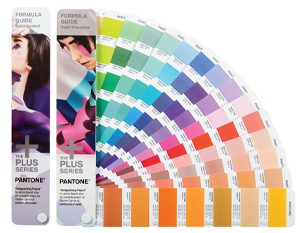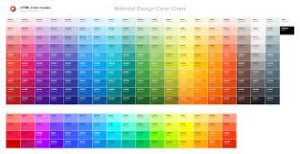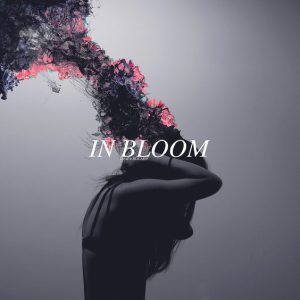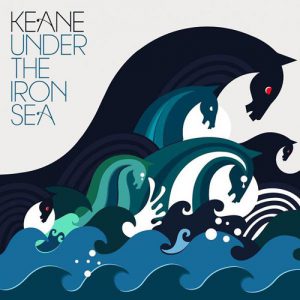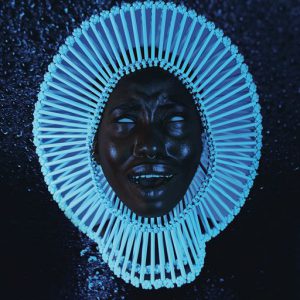Process color:
The most common method of achieving color in printing is referred to as CMYK, four–color process, 4/c process or even just process. To reproduce a color image, a file is separated into four different colors: Cyan (C), Magenta (M), Yellow (Y) and Black (K).
During separation, screen tints comprised of small dots are applied at different angles to each of the four colors. The screened separations are then transferred to four different printing plates, one for each color, and run on a printing press with one color overprinting the next. The composite image fools the naked eye with the illusion of continuous tone.
Source: https://www.pantone.com/spot-vs-process-color
spot color:
Source: https://www.pantone.com/spot-vs-process-color
Colors created without screens or dots, such as those found in the PANTONE MATCHING SYSTEM®, are referred to in the industry as spot or solid colors. From a palette of 18 basic colors, each of the spot colors in the PANTONE MATCHING SYSTEM is mixed according to its own unique ink mixing formula developed by Pantone. You probably mixed yellow and blue paint to get green in your youth. Creating a PANTONE Spot Color is similar in concept, but with the added need for precision.The precision begins with the printing ink manufacturers who are licensed by Pantone to manufacture inks for mixing PANTONE MATCHING SYSTEM Colors. To retain their license, they must annually submit samples of the 18 basic colors for approval by Pantone. Printers can then order the colors by number or mix it themselves according to the ink mixing formula in a PANTONE® FORMULA GUIDE. A PANTONE Chip supplied with the ink and/or job ensures that the printer achieves the color desired by the customer.

hex triplets:
Source:https://www.techopedia.com/definition/29788/color-hex-code
Definition – What does Color Hex Code mean?
A color hex code is a way of specifying color using hexadecimal values. The code itself is a hex triplet, which represents three separate values that specify the levels of the component colors. The code starts with a pound sign (#) and is followed by six hex values or three hex value pairs (for example, #AFD645). The code is generally associated with HTML and websites, viewed on a screen, and as such the hex value pairs refer to the RGB color space.
Techopedia explains Color Hex Code
A color hex code describes the composition of a certain color in a specific color space, usually RGB. In the case of RGB, the first value pair refers to red, the second to green and the third to blue, with decimal values ranging from 0 to 255, or in hexadecimal 0 to FF (#RRGGBB). RGB is an additive color space, meaning that when all three colors are put together the result is white (white light). For example, the color hex code for white is #FFFFFF or in decimal 255, 255, 255; and at the opposite end is black #000000. Yellow is made up of red and green, so its hex code is #FFFF00. Other color spaces using hex codes include:
- HSL
- HSV
- CMYK
- Hunter Lab
- CIE-Lab
The codes can also be represented in a three-digit code to represent double values in CSS. For example, #FFFFFF can be abbreviated as #FFF and #00AA55 as #0A5. This is defined in the CSS specifications, so it only works under the “<style >” tag when used within HTML. The notation reduces the palette to 4096 colors (12 bits) as opposed to 16,777,216 colors (24 bits) for the six-digit coding
color inventory:

